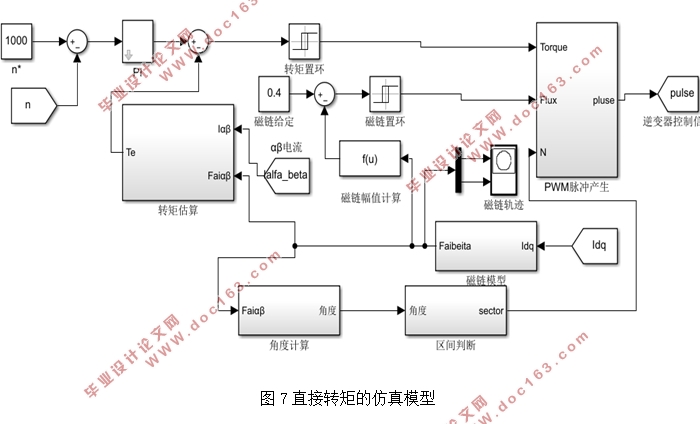基于MATLAB的永磁同步电机直接转矩控制的建模与仿真

1.无需注册登录,支付后按照提示操作即可获取该资料.
2.资料以网页介绍的为准,下载后不会有水印.资料仅供学习参考之用.
密 惠 保
基于MATLAB的永磁同步电机直接转矩控制的建模与仿真(论文11000字)
摘要:随着经济和科技的高速发展,传统电机已经不能满足人们对电机产品的需求。这个时候永磁同步电机就被科研人员带入生产生活。本研究中首先详细阐述了永磁同步电机的输出转矩控制原理,在此基础上对现阶段的转矩控制方法中存在的问题进行了系统性分析。研究过程中,我们分析了传统的直接转矩控制和引入电压空间矢量脉宽调制(SVPWM)的直接转矩控制。对比了两种方法在测量永磁同步电机的转矩脉动,电机的电流脉动以及电机运行过程中磁链的脉动等数据的精确性。
关键词:永磁同步电机;直接转矩控制;SVPWM;建模;仿真
Modeling and Simulation of direct torque control of permanent magnet synchronous motor based on MATLAB
Abstract:With the rapid development of economy and technology, traditional motors can no longer meet people's demand for motor products. At this time, permanent magnet synchronous motor (PMSM) was brought into production and life by scientific researchers. In this article,the principle of direct torque control of permanent magnet synchronous motor (PMSM) is introduced, and some problems of traditional direct torque control are analyzed.In the research process, we analyze the traditional direct torque control and the direct torque control with the introduction of voltage space vector pulse width modulation (SVPWM).The accuracy of the two methods in measuring the torque ripple, current ripple and flux ripple of PMSM is compared. [版权所有:http://think58.com]
Key words:Permanent Magnet Synchronous Motor; Direct Torque Control; SVPWM; Modeling; Simulation
[资料来源:THINK58.com]

目 录
1绪论 1
1.1电机的发展历程 1
1.2选题的目的和意义 1
1.3直接转矩控制国内外现状及水平 1
1.4永磁同步电机直接转矩控制的市场前景 2
2 永磁同步电机 2
2.1永磁同步电机的基本结构 2
2.2永磁同步电机的数学模型 3
2.3永磁同步电机的转矩特性 4
3直接转矩控制 5
3.1永磁同步电机直接转矩控制的特点 5
3.2传统直接转矩控制 6
3.3基于SVPWM的直接转矩控制 7
3.3.1SVPWM的直接转矩控制的优点 7
3.3.2SVPWM的直接转矩控制的原理 7 [资料来源:http://www.THINK58.com]
4 基于MATLAB的直接转矩控制建模与仿真设计 9
4.1MATLAB软件介绍 9
4.2直接转矩控制系统的仿真模型 9
4.2.1传统直接转矩控制系统的仿真模型 9
4.2.2基于SVPWM的直接转矩控制系统的仿真模型 13
5仿真实验的结果与对比分析 16
5.1传统直接转矩控制仿真结果 16
5.2基于SVPWM直接转矩控制仿真结果 19
5.3结果图对比分析 23
6总结 23
参考文献 24
致谢 26
